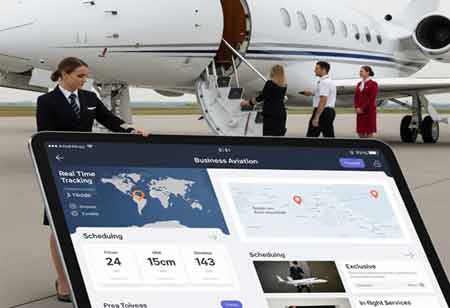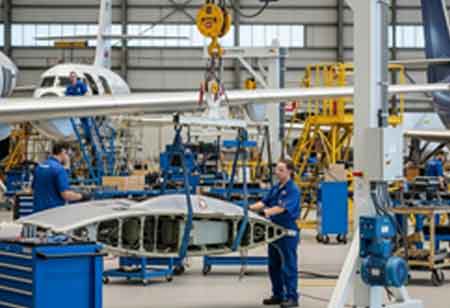The aviation sector relies heavily on specialized services to manage the complexity of aircraft transactions. Aircraft sales services play a crucial role in connecting buyers and sellers, ensuring that every stage of a deal is executed with precision, compliance, and strategic foresight. Beyond the traditional function of matching interested parties, these services have transformed into comprehensive solutions that integrate technical audits, financial structuring, regulatory expertise, and global logistics. As the demand for efficiency and transparency grows, the value of trusted sales services continues to rise.
Evolving Patterns in Aircraft Sales
Aircraft sales services have become central to the way buyers and sellers approach transactions in the aviation sector. These services are no longer limited to simple introductions between interested parties. Instead, they provide comprehensive advisory and execution services throughout an aircraft’s lifecycle. Market participants increasingly seek out providers who combine technical expertise, legal knowledge, and commercial insight in a seamless package. This shift reflects a broader trend toward professionalization and specialization, where services act as trusted partners rather than basic intermediaries.
One defining feature of the market is the growing emphasis on transparency and verifiable data. Buyers and investors seek confidence in their acquisitions, expecting comprehensive documentation of the aircraft’s condition, maintenance history, and regulatory status. Sales services that provide standardized technical records and clear asset histories reduce uncertainty and foster stronger trust among stakeholders. This data-driven approach has become a hallmark of top-tier providers, who recognize that accurate information is as valuable as the aircraft itself.
Globalization is another trend shaping the sector. Aircraft are often sold across borders, requiring expertise in export procedures, transferring registration, and aligning with regulatory requirements. Aircraft sales services have established international networks that facilitate seamless transitions between jurisdictions, thereby making cross-border sales more efficient and secure. This global perspective ensures that buyers have access to a wider range of inventory, while sellers gain exposure to broader markets, thereby maximizing transaction opportunities.
The integration of technology is further transforming the way sales services operate. Digital listing platforms, virtual inspections, and analytics tools offer faster and more efficient ways to connect buyers with suitable aircraft. The personal element remains indispensable. Clients continue to value expert negotiation, tailored advisory, and the assurance that specialists handle every detail of a complex transaction. This balance of advanced tools and human expertise defines the modern standard for aircraft sales services.
Addressing Obstacles with Strategic Solutions
Despite advancements, the aircraft sales sector continues to face several recurring challenges. One frequent issue is the presence of incomplete or inconsistent maintenance documentation. Without a complete record of an aircraft’s technical history, buyers face uncertainty over value and potential costs. To resolve this, leading services conduct thorough pre-listing audits, compiling comprehensive asset dossiers that present normalized records. This approach accelerates negotiations and ensures that valuations are based on verifiable information.
Regulatory complexity also presents obstacles. Variations in rules across jurisdictions can delay title transfers and airworthiness approvals. Sales services address this by incorporating compliance specialists into their teams or through strong partnerships with legal experts. These professionals navigate registry requirements, escrow arrangements, and acceptance checklists, ensuring smooth and predictable processes even in multi-jurisdictional deals.
Financing limitations often restrict the pool of eligible buyers. High acquisition costs can discourage interested operators who lack upfront capital. To overcome this, top sales services design flexible financing packages, such as staged payments, lease-to-own agreements, and collaboration with financiers. These options make transactions more accessible while protecting seller interests. By bridging financing gaps, services expand the market and increase liquidity.
Operational challenges also arise when transferring aircraft. Ferry logistics, crew sourcing, and pre-delivery checks can complicate transitions between owners. Sales services mitigate these risks by offering integrated logistical planning, securing ferry permits, and coordinating qualified crews. This reduces delays and ensures that aircraft are delivered safely and on schedule.
Opportunities and Innovations Driving Stakeholder Value
The aircraft sales sector continues to evolve with opportunities that benefit all stakeholders. One significant development is the adoption of digital platforms that centralize listings and technical data. These platforms enable buyers to view detailed records and participate in virtual inspections, thereby saving time and costs. Sellers, in turn, benefit from increased visibility and faster matching with qualified prospects. By making information readily accessible, digitalization enhances efficiency without compromising the personalized service that clients value.
Analytics and predictive tools are also creating new possibilities. By analyzing maintenance logs and performance data, services can project residual values and estimate component lifespans with greater accuracy. This information empowers both buyers and investors to make informed decisions about long-term ownership and fleet planning. More accurate forecasting translates to more substantial returns on investment and greater confidence during negotiations.
Remote inspection technologies have become another key advancement. High-resolution imaging, 3D scans, and augmented reality tools enable prospective buyers to evaluate aircraft without being physically present. These innovations reduce costs associated with travel while developing the pool of potential buyers who can participate in assessments from anywhere in the world. The result is faster deal flow and increased market liquidity.









